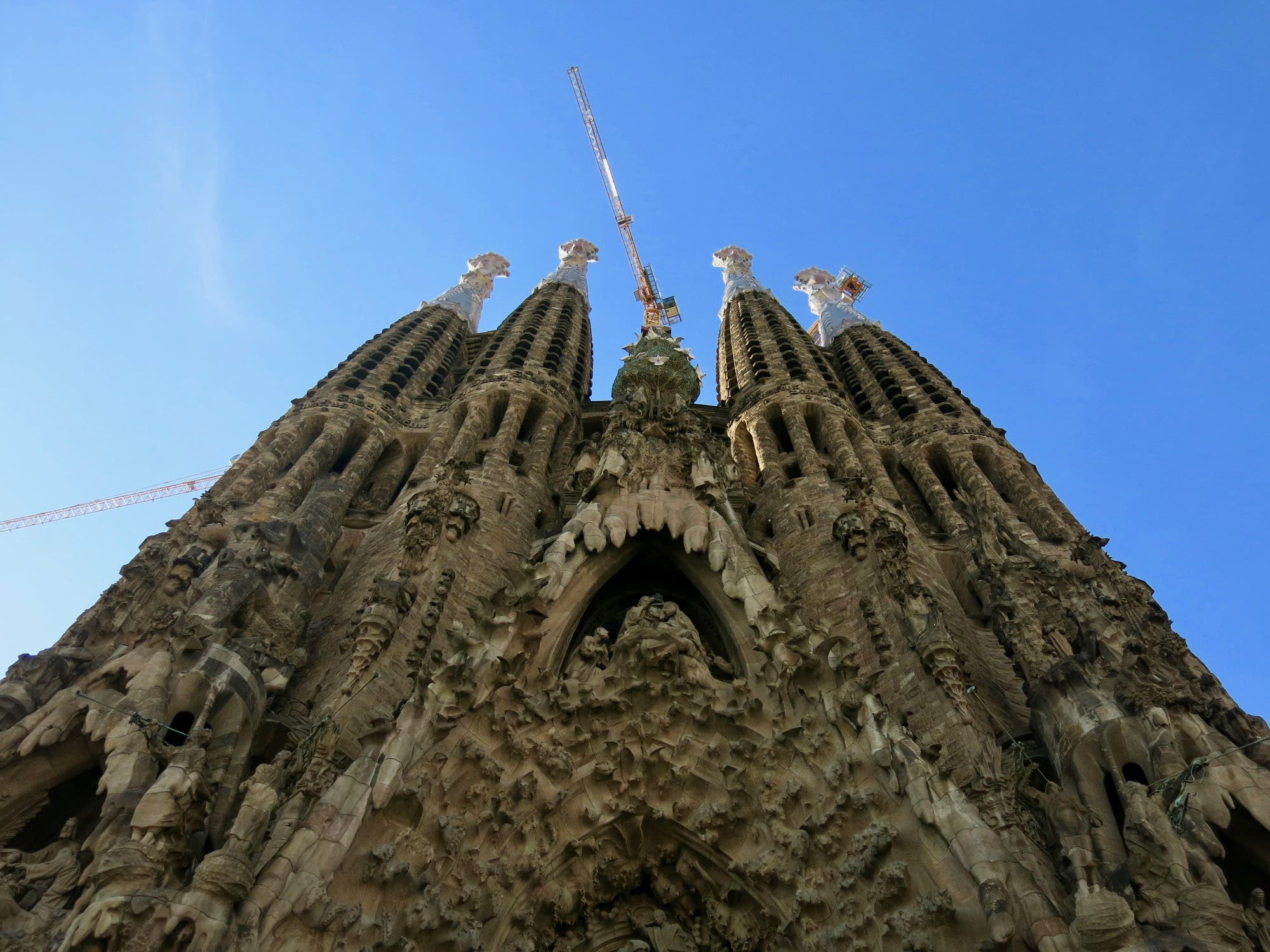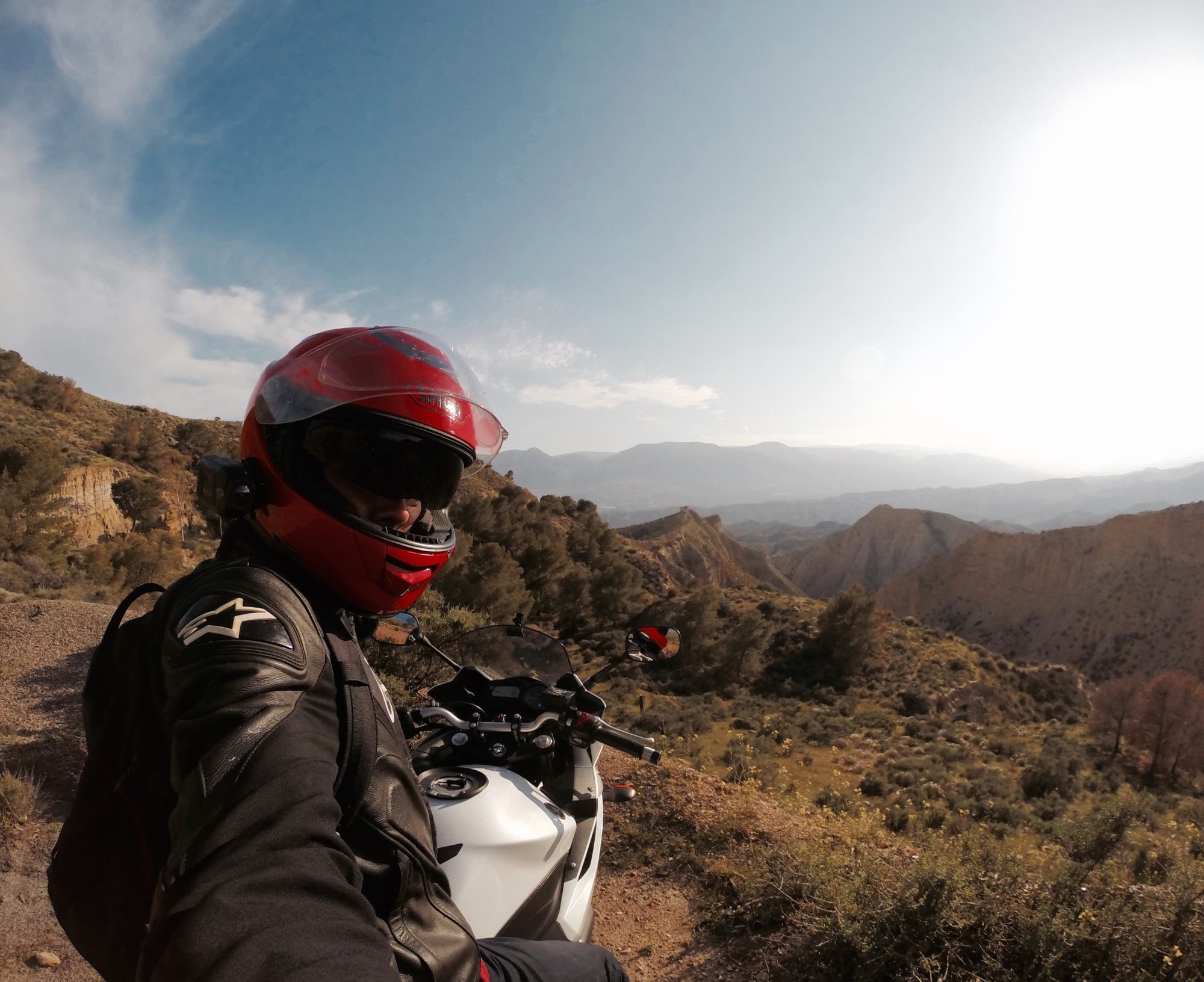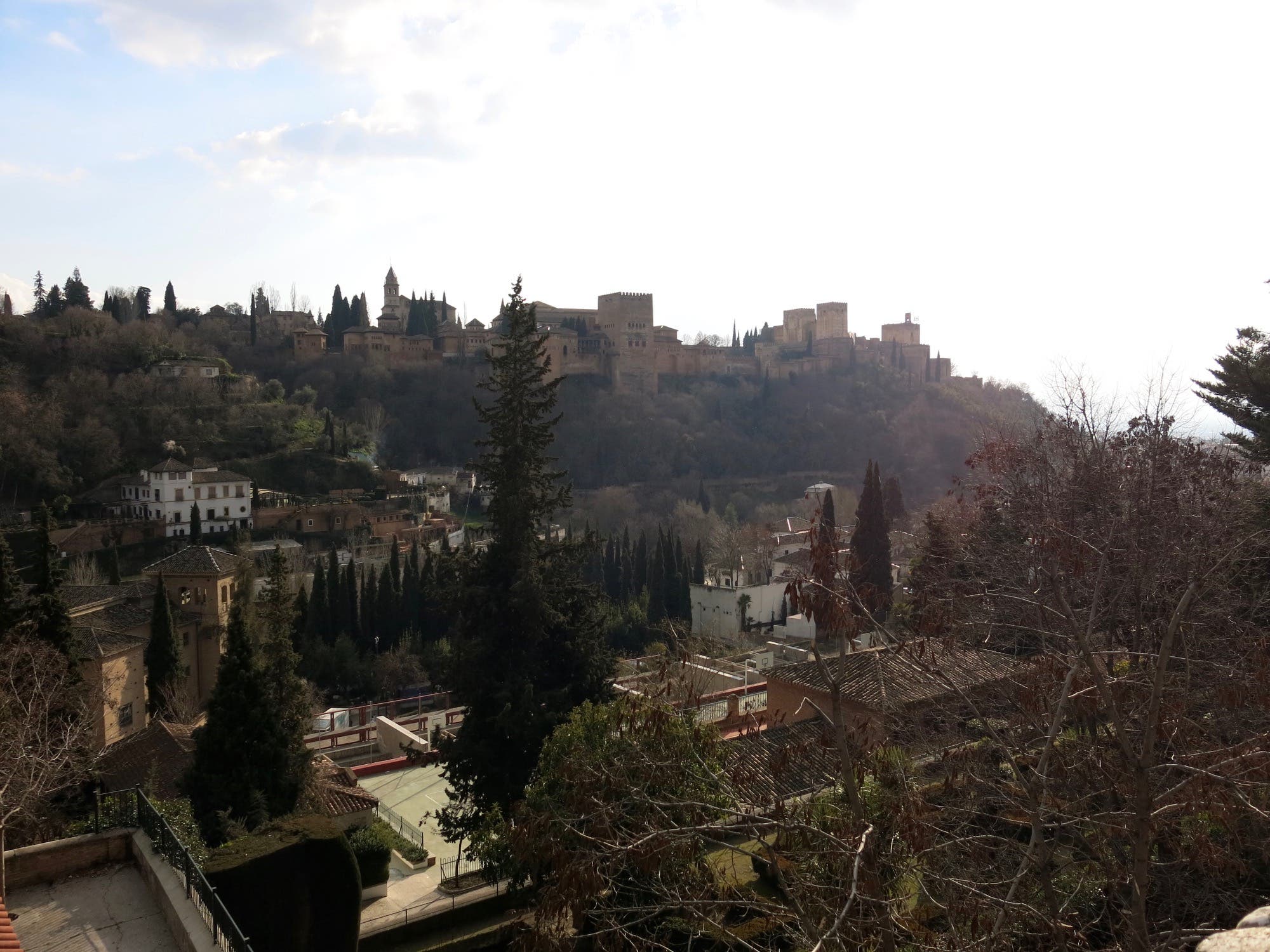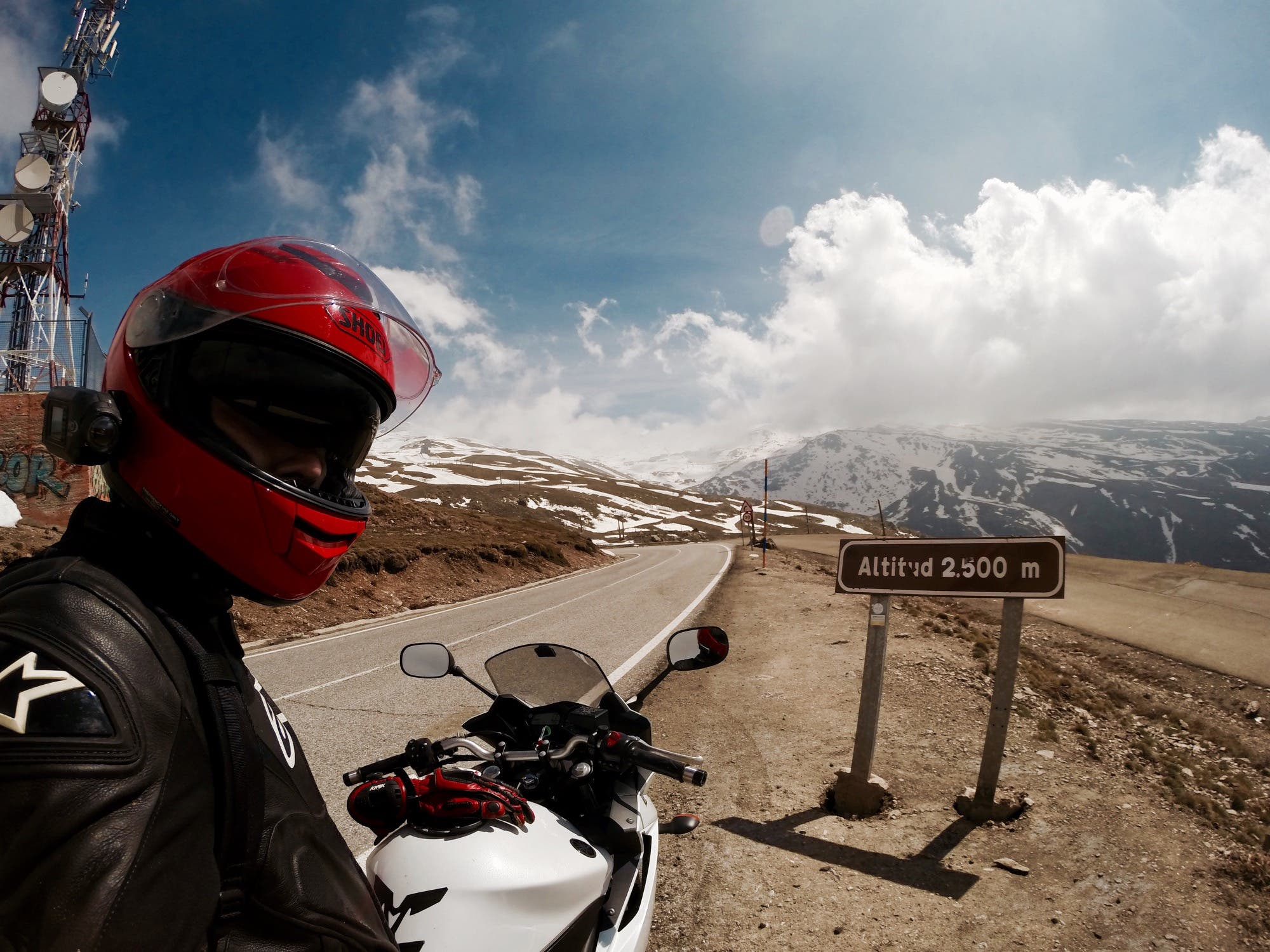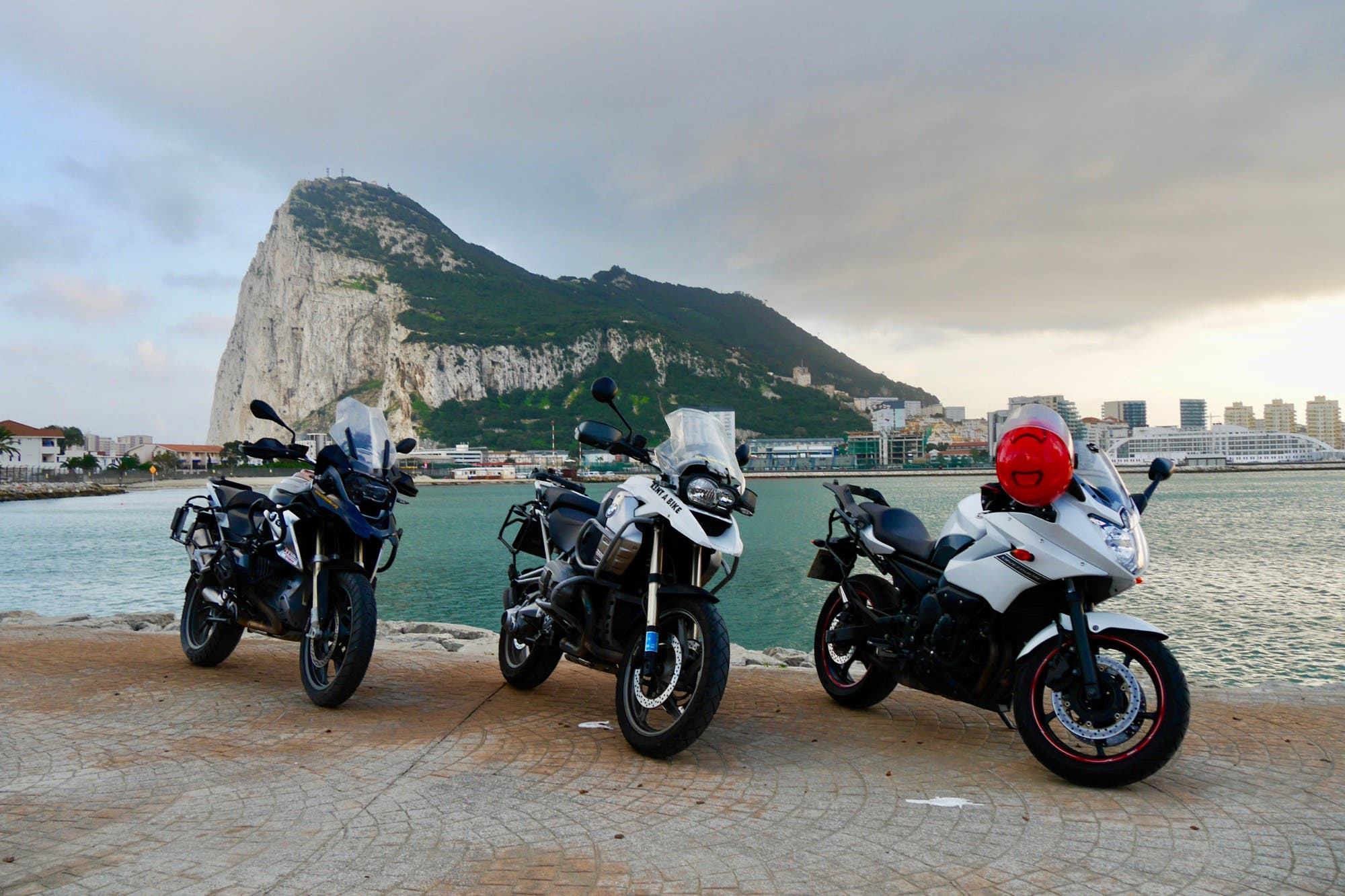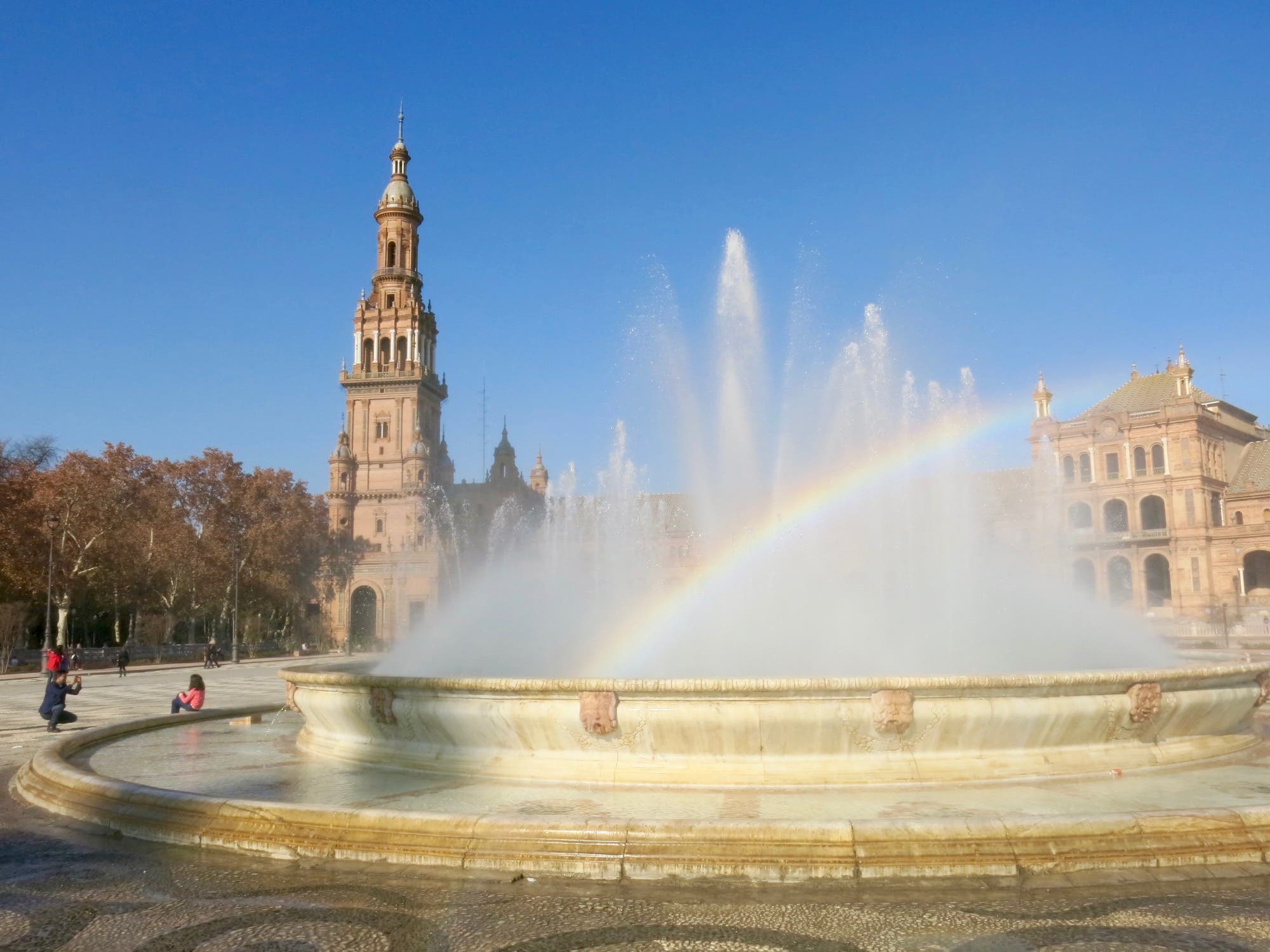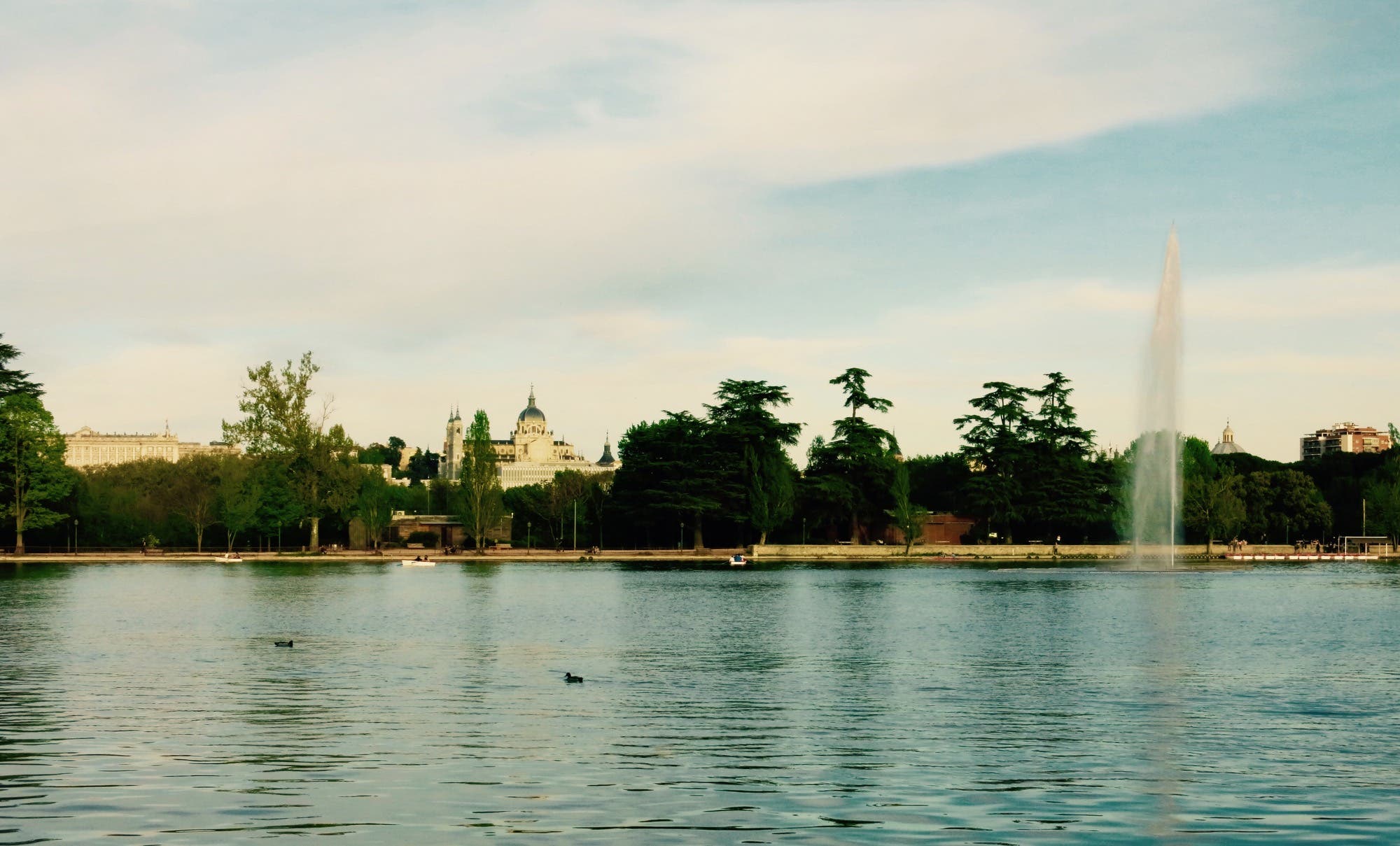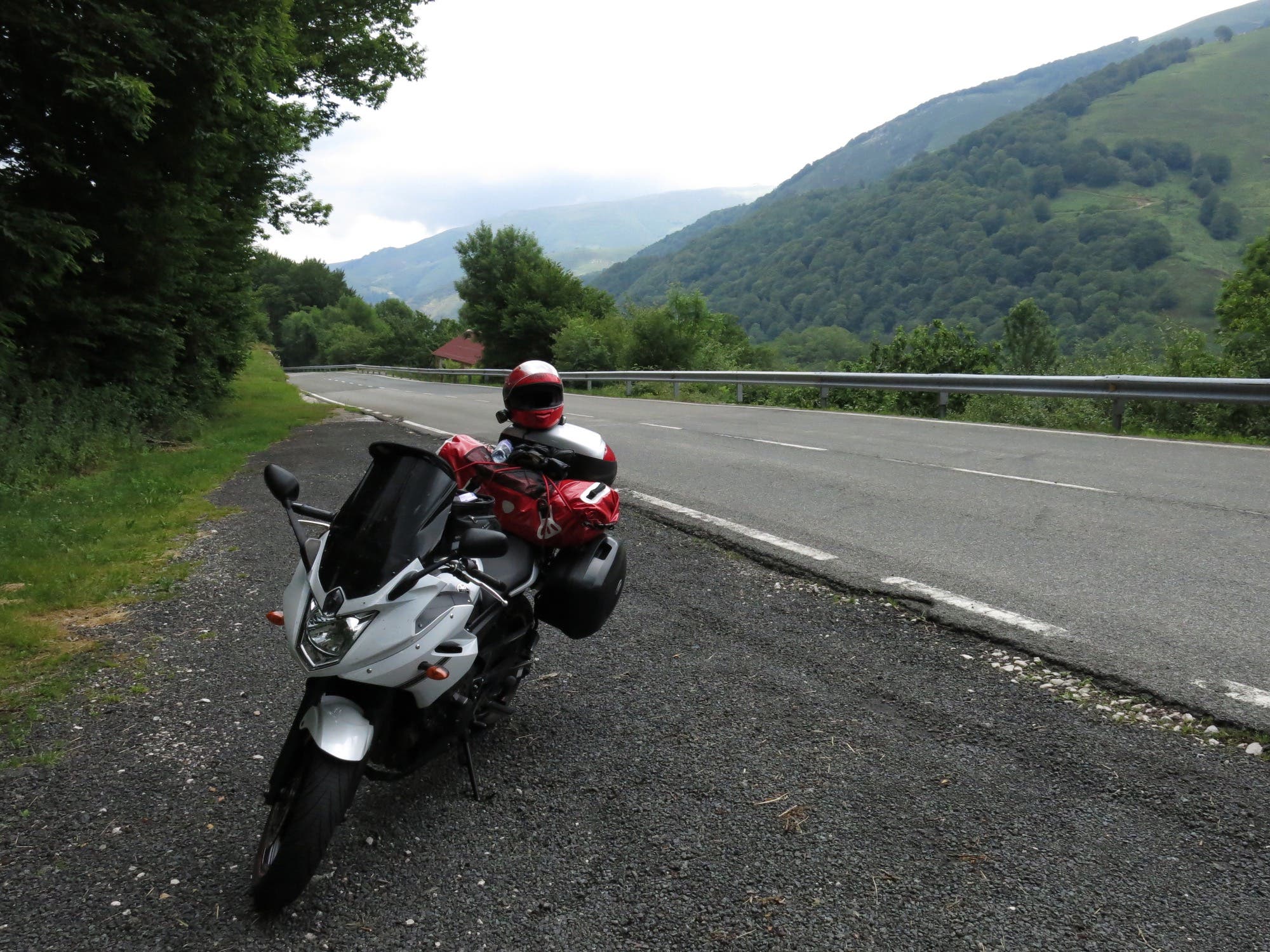We finished off in the north west corner of Italy last time - this time we're going to head west and south, following the Mediterranean coastline.
Eventually you’ll reach the French border, and by this point the motorway will be becoming rather more standard in nature within a few miles, so it’s a good excuse to go and explore the city-state of Monaco.
Home to what is probably the most famous of Formula 1 tracks, Monaco is tiny and incredibly rich. You can ride the entire track (unfortunately not at race speed), even the red and white kerbs are in place throughout the year. I can’t recommend staying in Monaco however, it is absurdly expensive in every way.
West of Monaco, the countryside is littered with superb roads of all kinds – some of the most famous being alongside the Verdon and Tarn Gorges – famed for their great depths and turquoise waters. It is hard to go wrong with the roads around here though, so if you get lost you will not be complaining.
Continue on westwards and it’s best to make progress here as the landscape becomes flatter, you’re aiming for Barcelona now which is probably a good two days’ ride. You can make use of the toll roads if you want to make fast progress, but beware what it will do to your wallet, your tyres and fuel consumption – sitting at 85mph all day does get tiresome too – there are average speed checks from the tolls and subtle cameras too, so don’t be tempted to up the pace too much either.
Once you’re in Spain you’ll notice the driving standards start to really deteriorate – while the Italians are famed for their shoddy driving, they are generally aware of what is around them and just take no prisoners. Spanish driving is lackadaisical in nature and somewhat perilous to motorcycles in town, especially near roundabouts. The roundabouts also happen to often be polished by heat and tyres, making stopping on them a challenge, so be very careful at all times – indicating is very much an option, and lane discipline an unknown concept!
Once you reach Barcelona you can relax – I consider this to be one of my favourite cities in Europe. It’s not the cheapest place in Spain but it’s not too expensive, and the range of activities is mind-boggling. An absolute must-see is Gaudi’s Sagrada Familia – the mind-blowing cathedral that’s still being built. Order a ticket online and get at least an audio guide to pick up, you’ll skip the queue even if it’s busy. The detail and scale are truly hard to believe so take your time looking around. Taking a walk down Las Ramblas is a nice way to absorb some time – the cafes can be a little variable though. A visit to the Olympic Park is also essential, and taking the cable car from the centre is a great way to see the city on the way there.
Barcelona is also surrounded by fantastic roads in the hills and mountains nearby, so take your pick – it’s where many motorcycle and car press launches take place, and for good reason.
You’re going to head south west now into Spain proper. The region Barcelona is in is called Catalonia, and they’ve been trying for independence for a long, long time – with the situation coming to head just recently. As you head down Spain you’ll notice the colour of people’s skin and the landscape start to change, along with the names of towns.
Avoid any AP roads you come across, these are the Spanish toll roads. Much like the French ones they allow great progress, but the cost is steep and they almost always have a normal road running parallel, and this normal road can be a dual carriageway with a similar speed limit!
Valencia is a nice stop to make on the way down Spain – it’s a relatively modern city but still retains much of its old architecture. Go for a coffee in one of its little squares, it’ll be cheap and delicious – a Café Americano will get you a black coffee, Café Solo an espresso style drink, and a Café Con Leche will get you a coffee that’s half milk, and half espresso – a Spanish favourite. The maximum amount you should pay for a coffee in Spain will be two euros, but one euro is quite common too. Valencia is also home to a MotoGP track – well worth attending if you’ve timed your trip right!
Continue south towards Almeria now and you’ll be going past several recognisable names such as Benidorm and Alicante. If you’re after an all-inclusive holiday then by all means go have a look, but the view from the hills behind them is more than enough for me!
Almeria is situated in a peculiar place, sandwiched between one of the driest places in Europe – Desierto de Tabernas – and an ancient volcanic landscape to its southeast – both are worth a visit for their raw natural beauty. You can pass through the desert on the way to the next stop – Granada – my second favourite Spanish city.
Granada sits next to the Sierra Nevada mountain range and benefits from its fresh water throughout. Don’t buy bottled water here, there are taps flowing all over the place and it tastes fantastic. Granada’s most famous building is the Alhambra – a historic old palace with some extraordinary features. Granada has been taken over by invaders repeatedly in the past because of its value, and because of its palace. As a result, it has a peculiar mix of architecture including both Christian and Muslim, with some amazing detail. Tickets can be a little hard to come by in high season without pre-booking, but an easy way to get hold of one is with a Granada Card which includes entry to it and few other attractions. The Alhambra also has some gorgeous gardens to explore and has great views of the city. Arguably more importantly, every time you buy a drink in most bars in Granada you get a tapa, and after three or four drinks you won’t need to go and buy dinner as a result. Most bars just give you what they have, but my favourite is Bar Poë which has a small menu to choose your tapa from – they also do flaming absinthe which is a good way to end your evening!
The Sierra Nevada mountains are well worth heading into during the summer, the roads are relatively quiet and have some great views. While not quite as spectacular as the Italian, French and Austrian Alps, the roads themselves are much more suited to spirited riding. The sub-mountain range of the Alpujarras to the south is also filled with fantastic roads, and it’s extremely quiet throughout the year.
Head south, and then west, and you’ll follow the coast to Malaga, a city synonymous with the package holiday on the Costa del Sol. While it may have a huge beach and booming nightlife, it also has a charming old town filled with tapas restaurants and well worth a look around. There is a ‘free’ tour available from the centre (you pay a tip at the end) which takes you around some nice sights – well worth doing. Accommodation is also plentiful and it makes a good base to explore the surrounding area.
Further south, and worth a day trip to, is the British Overseas Territory of Gibraltar. Perched almost at the most southerly tip of mainland Europe, it’s a limestone outcrop that has been a thorn in the side of the Spanish government for hundreds of years. While it may be tiny it’s well worth a short trip to, you can get a look at Morocco and Ceuta across the Strait of Gibraltar on a clear day, and have a walk with Gibraltar’s macaques at the top of the Rock after taking a cable car ride up. Just be wary of the local drivers and riders – the standard of roadcraft in Gibraltar is some of the worst I’ve seen anywhere.
Tarifa, the Spanish town which marks the most southerly part of mainland Europe, is about 40 minutes ride from Gibraltar. The road there has some amazing views over the Strait, but its surfacing is not the best. Tarifa has an absolutely huge sandy beach but it’s often quite windy, which makes it very popular with kite and wind surfers. It’s also home to my favourite pizza place in the area – La Piccola Tentazione, or Pizzeria con Cucina. It has some funny opening hours without rhyme or reason, but the pizza is fantastic.
On leaving Malaga for good, I would ride south to just beyond Marbella and take the road signposted for Ronda – the A-397. This is my favourite road in Europe – bar none. It stretches for 40km from the town of San Pedro to Ronda and is utterly sublime to ride. Unlike a lot of mountain passes, it doesn’t have a single hairpin bend, but every single corner can be ridden at a decent speed with some commitment. The surface is great throughout, and the road is wide enough to alleviate a lot of the worry that can come from riding roads with sheer drops. I quite honestly cannot recommend the road enough, it’s everything a motorcycling road should be. About a third of the way along you’ll come across a small café called Venta el Madroño which serves great coffee and cheap simple food. Bikers flock to the café and you can watch bikes scream past, along with the occasional supercar – it’s a popular spot so don’t be shocked if you run into other British bikers!
The scenery is not quite as stunning as what you’d find on Alpine passes, but this is a road you’ll have a lot more fun actually riding. There is one speed camera for each direction of the road – as soon as you see the sign just stick to the speed limit for a couple of kilometres until you hit them. They’re unmarked grey boxes, but it’s obvious what they are when you look in your mirror. Guardia Civil (the usual traffic police) can sometimes be seen, but don’t go much above 80km/h and you should be fine, going above 100km/h along here can be a little suicidal in places.
Continue along the A-397 and you’ll reach the town of Ronda. Ronda itself is a lovely little town perched on a rocky outcrop, with a historic bridge atop a sheer sided valley right at its centre. You can either just look around the town, or take the rather narrow and steep track to its bottom – with a little confidence and patience it’s perfectly possible to traverse on a road bike. The view from the bottom is one that a lot of people don’t get, and it makes a great photo.
From Ronda you’re going onto Sevilla – officially the hottest place in Europe. Temperatures can soar past 50 degrees Celsius at the height of summer. Of interest here is the Real Alcazar de Sevilla, a beautiful palace and grounds – also where the scenes in Dorne were filmed for Game of Thrones. The cathedral of Sevilla is also lovely to walk around, along with all the little side streets. I can absolutely tell you to avoid an Indian restaurant called Jaipur – very lacklustre food, and they didn’t even have orange juice or Indian beer! It’s next to the Metropol Parasol – a striking looking structure that’s well worth going up. On the way from Ronda to Sevilla you’ll also come fairly close to Jerez, home to another MotoGP circuit.
Cordoba is next on the list – home to the amazing building of the Mezquita, one of the greatest buildings of Islam in the world with its many arches from a time when Islam existed much more widely than it does now. In usual Spanish fashion Cordoba is packed with excellent tapas and wine bars, just beware the tourist traps.
Onward from Cordoba, the next stop is Madrid, the Spanish capital. I’d ride the N420 from Cordoba to Cuidad Real to avoid some of the motorway, it makes for nice relaxed progress with gentle curves.
Madrid is unlike most other Spanish cities and is, predictably, huge. Sat atop the high plain of Spain it enjoys a very pleasant climate in the summer, with mountains nearby offering winter skiing. Signage on the major roads leaves something to be desired so be prepared to get lost without prior preparation, and the traffic there is much more intense here than basically anywhere else in Spain. One thing that sets Madrid apart from most cities is its abundance of parks – Casa de Campo is one of the largest and best, including a cable car to get a better view.
From Madrid we’re going to head north back up to the French border – I’d aim for Zaragoza which is a bustling city before heading up to the Pyrenees. Like most mountain ranges it’s packed with great roads, but it’s generally considerably quieter than the Alps. If you’ve got a few days to spare a diversion to the west into the Picos de Europa is absolutely worth doing, it has some spectacular quiet roads and views.
Otherwise, that’s Spain done – it’s a fantastic country to ride around with a thriving motorcycle culture, just look at their MotoGP riders!
Next we’ll head back into France before heading to Germany’s Black Forest.





